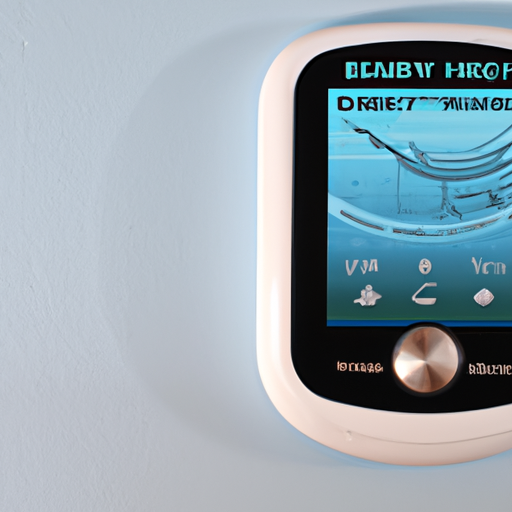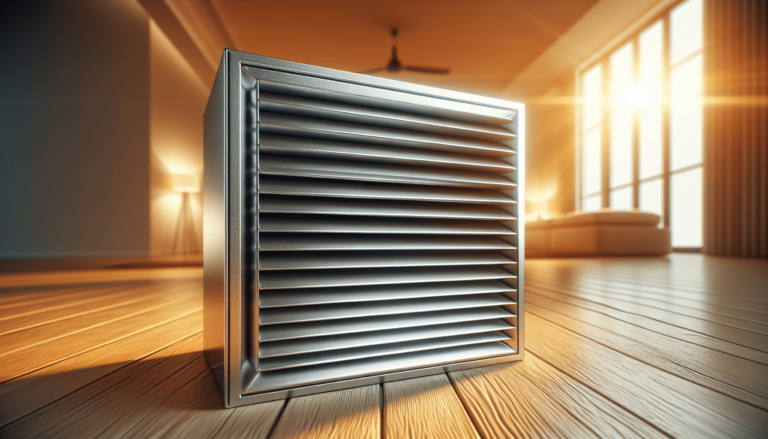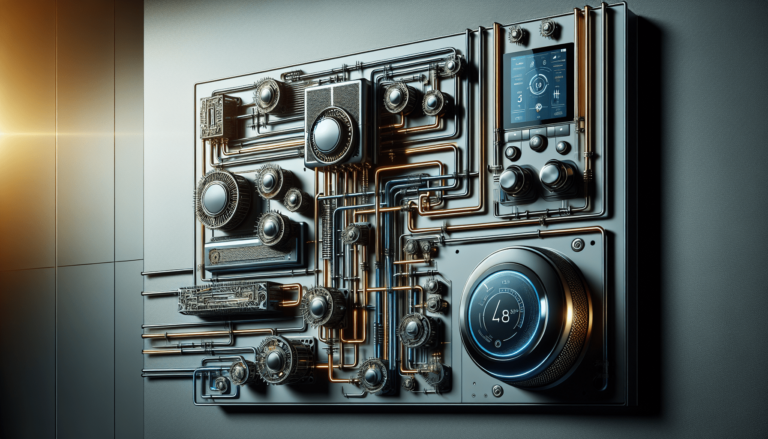

HVAC Services
Get Professional Repairs From The Area's Trusted HVAC Technicians. Ask About Our Services! We Offer Professional Heating & Cooling System Repairs And Guarantee Long-Lasting Results.
Got Question? Call us: (850) 678-2665Financing
Energy-Efficient HVAC Upgrades Worth Investing In
Looking to make your home more energy-efficient? Discover the best HVAC upgrades worth investing in to save money, reduce energy consumption, and improve comfort. Visit Tempacure Heating and Air Conditioning at [website].

If you want to make your home more energy-efficient while also improving your comfort, it’s time to consider investing in some HVAC upgrades. Upgrading your heating, ventilation, and air conditioning system can actually save you money in the long run, as it helps reduce energy consumption and lowers utility bills. Whether it’s replacing an outdated furnace, upgrading to a smart thermostat, or improving insulation, there are numerous options available to suit your specific needs. By making these energy-efficient HVAC upgrades, you’ll not only contribute to a greener environment but also enjoy a more comfortable and cost-effective living space. To get started, reach out to Tempacure Heating and Air Conditioning, located at 325 Cedar Ave S, Suite B, Niceville, FL 32578, or call them at (850) 678-2665. Visit their website at https://tempacurehvac.com/ to discover the energy-efficient HVAC upgrades worth investing in.
Introduction
If you’re looking to make your home more comfortable, reduce your energy bills, and minimize your environmental footprint, investing in energy-efficient HVAC upgrades is a smart choice. With advancements in technology and increased awareness about sustainability, there are now a variety of options available that can significantly improve the efficiency and performance of your heating, ventilation, and air conditioning systems. In this article, we will explore the benefits of these upgrades and provide insights into different energy-efficient HVAC options that you can consider for your home.
Benefits of Energy-Efficient HVAC Upgrades
Lower Energy Costs
One of the primary advantages of energy-efficient HVAC upgrades is the potential for significant cost savings on your energy bills. Traditional heating and cooling systems can be quite energy-intensive and can quickly become a drain on your wallet. By replacing older, inefficient units with energy-efficient models, you can reduce your energy consumption and ultimately lower your monthly utility expenses. With the rising costs of energy, this can make a substantial difference in your long-term budget.
Reduced Environmental Impact
Energy-efficient HVAC upgrades not only benefit your pocket but also contribute to a greener and more sustainable future. Traditional HVAC systems often rely on fossil fuels or consume a significant amount of electricity, resulting in increased carbon emissions and environmental degradation. By opting for energy-efficient alternatives, such as heat pumps or solar-powered systems, you can significantly reduce your carbon footprint and minimize your impact on the environment. This way, you can enjoy a comfortable indoor environment while knowing that you are doing your part in preserving our planet.
Improved Indoor Air Quality
Another crucial aspect of energy-efficient HVAC upgrades is their potential to enhance the indoor air quality of your home. Conventional heating and cooling systems may not effectively filter out pollutants, allergens, or other harmful particles from the air. However, energy-efficient systems often come equipped with advanced filtration mechanisms that can efficiently capture and eliminate these contaminants, ensuring cleaner and healthier indoor air for you and your family. This is particularly beneficial for individuals with respiratory conditions or allergies, as it can provide relief and contribute to overall well-being.
1. Programmable Thermostats
How They Work
programmable thermostats allow you to set specific temperature schedules for different times of the day or week, enabling you to customize your HVAC system’s operation based on your preferences and lifestyle. These thermostats can be programmed to automatically adjust the temperature settings to conserve energy when you’re not at home or during periods when less heating or cooling is needed.
Benefits
Investing in a programmable thermostat offers several advantages. Firstly, it helps you save energy and reduce costs by avoiding unnecessary heating or cooling when no one is home. Additionally, programmable thermostats provide convenience by ensuring that your home is at a comfortable temperature when you return. This eliminates the need to manually adjust the thermostat each time, saving you time and effort.
Considerations
When installing a programmable thermostat, it’s crucial to consider compatibility with your existing HVAC system and your level of comfort with technology. Some programmable thermostats may require professional installation, while others can be easily installed as a DIY project. It’s also important to familiarize yourself with the thermostat’s features and programming options to maximize its efficiency and effectiveness.
2. Energy-Efficient Heat Pumps
How They Work
Energy-efficient heat pumps are a versatile and eco-friendly option for heating and cooling your home. Instead of generating heat or cold air, they transfer it from one place to another using refrigerant technology. In heating mode, heat pumps extract warmth from the outside air or ground and transfer it indoors, providing efficient heating. In cooling mode, they remove heat from the indoor air and release it outside, cooling your home effectively.
Benefits
The primary benefit of energy-efficient heat pumps lies in their ability to provide both heating and cooling functions in a single system. This eliminates the need for separate heating and cooling systems, saving space, installation costs, and maintenance expenses. Moreover, heat pumps are known for their remarkable energy efficiency, as they consume significantly less electricity compared to traditional heating and cooling systems. This results in substantial energy savings and reduced operating costs over time.
Considerations
Before opting for a heat pump, it is essential to consider factors such as regional climate, the size of your property, and the efficiency rating of the unit. Heat pumps are most efficient in moderate climates, where winters are not excessively cold and summers are not scorching hot. They may not be suitable for areas with extreme temperature fluctuations. Proper sizing and professional installation are critical to ensure optimal performance and efficiency.
3. High-Efficiency Furnaces
How They Work
High-efficiency furnaces are designed to maximize energy efficiency and heat output while minimizing fuel consumption. They achieve this by utilizing advanced combustion and heat exchanger technologies. These furnaces extract more heat from the combustion process, resulting in improved efficiency and reduced waste.
Benefits
Investing in a high-efficiency furnace can yield several benefits. Firstly, these furnaces generate more heat per unit of fuel, helping you save on heating costs. Moreover, their advanced design reduces operational noise, leading to a quieter indoor environment. High-efficiency furnaces also produce fewer greenhouse gas emissions, contributing to a cleaner and healthier atmosphere. Additionally, many high-efficiency furnaces come equipped with features such as variable-speed blowers and advanced air filtration systems, improving overall comfort and indoor air quality.
Considerations
When considering a high-efficiency furnace, it’s important to factor in the initial cost and payback period. Although these furnaces may have a higher upfront price compared to standard models, the long-term energy savings can offset the initial investment. It’s also crucial to select the right size furnace for your home and ensure proper installation to maximize efficiency and performance. Regular maintenance and filter replacement are essential to maintain the furnace’s efficiency and longevity.
4. Energy Recovery Ventilators
How They Work
Energy recovery ventilators (ERVs) are ventilation systems that recover and transfer heat or coolness from the outgoing stale air to the incoming fresh air. As the stale air is exhausted from your home, the heat or coolness it contains is transferred to the incoming fresh air, minimizing energy loss and reducing the workload on your HVAC system.
Benefits
ERVs provide several benefits, including improved indoor air quality, enhanced energy efficiency, and moisture control. By exchanging heat between incoming and outgoing air streams, ERVs help maintain a more consistent indoor temperature, resulting in less reliance on heating or cooling systems. Enhanced ventilation also helps remove indoor pollutants, allergens, and excess humidity, creating a healthier and more comfortable living environment.
Considerations
Before installing an ERV, it’s important to determine the ventilation needs of your home, including the number of occupants and the desired air exchange rate. Professional installation is recommended to ensure proper sizing and integration with your HVAC system. Additionally, regular maintenance, including filter replacement and cleaning, is necessary to ensure optimal performance and prevent the buildup of contaminants.
5. Smart HVAC Control Systems
How They Work
Smart HVAC control systems integrate advanced technology, such as Wi-Fi connectivity and sensors, to provide efficient and intelligent control over your heating and cooling systems. These systems allow you to remotely monitor and control your HVAC settings using smartphone apps or voice commands, providing convenience and flexibility.
Benefits
Smart HVAC control systems offer several benefits, including increased comfort, energy savings, and convenience. With the ability to adjust temperature settings remotely, you can ensure that your home is at an optimal temperature when you arrive or customize settings based on your schedule. These systems also provide energy usage insights, allowing you to identify opportunities for further energy savings. Additionally, smart control systems can automatically adjust HVAC settings based on factors like occupancy and outdoor temperature, maximizing efficiency and reducing energy waste.
Considerations
When choosing a smart HVAC control system, it’s important to ensure compatibility with your existing HVAC equipment and your level of comfort with technology. Consideration should be given to security features, such as password protection and data encryption, to protect your privacy. It’s also crucial to set appropriate temperature schedules and avoid excessive adjustments, as frequent changes can increase energy consumption.
6. Insulation and Sealing
Importance of Proper Insulation
Proper insulation is a critical component of an energy-efficient home. Insulation acts as a barrier, minimizing heat transfer between the interior and exterior of your home. By reducing unwanted heat gain or loss, insulation helps maintain a comfortable indoor temperature while reducing the workload on your HVAC system.
Types of Insulation
There are various types of insulation available, including fiberglass, cellulose, spray foam, and rigid foam. Each type has its own advantages and considerations, such as cost, ease of installation, and performance. It’s important to choose the right type of insulation based on factors like your climate, local building codes, and the specific areas of your home that require insulation.
Benefits of Air Sealing
In addition to insulation, air sealing plays a crucial role in maximizing energy efficiency. Air leaks and drafts in your home can result in significant energy loss and reduced comfort. By identifying and sealing these gaps, cracks, and leaks in your home’s envelope, you can prevent conditioned air from escaping, reduce the infiltration of outdoor air, and optimize the performance of your HVAC system. Air sealing can be achieved through various methods, including weatherstripping, caulking, and adding seals to windows and doors.
7. Ductless Mini-Split Systems
How They Work
Ductless mini-split systems provide zoned heating and cooling without the need for ductwork. These systems consist of an outdoor compressor unit and one or more indoor air handling units, which are connected by refrigerant lines. Each indoor unit can be controlled independently, allowing you to customize the temperature in different zones of your home.
Benefits
Ductless mini-split systems offer several advantages. Firstly, they eliminate the need for ductwork, which can be expensive to install, maintain, and repair. This makes them an ideal solution for homes without existing duct systems or for specific areas where ductwork is not feasible. Additionally, the ability to control each zone independently provides enhanced flexibility and comfort, allowing you to adjust temperatures according to individual preferences. Ductless systems are also known for their energy efficiency, as they avoid the energy losses associated with ductwork.
Considerations
When considering a ductless mini-split system, it’s important to determine the number of indoor units required based on the size and layout of your home. Professional installation is essential to ensure proper sizing, placement, and refrigerant line installation. Additionally, routine maintenance, such as filter cleaning or replacement, is necessary to maintain optimal air quality and system performance.
10. Solar-Powered HVAC Systems
How They Work
Solar-powered HVAC systems harness the power of the sun to provide heating, cooling, and ventilation for your home. These systems utilize solar panels to capture sunlight and convert it into electricity, which powers the HVAC components. Excess electricity generated can be stored in batteries or fed back into the grid, allowing for energy independence and potential cost savings.
Benefits
Investing in a solar-powered HVAC system offers numerous benefits. Firstly, these systems provide sustainable and renewable energy, reducing reliance on fossil fuels and decreasing carbon emissions. Solar power is free and abundant, meaning that operating costs can be significantly reduced or eliminated altogether. Additionally, solar-powered HVAC systems can increase the value of your home and may make you eligible for local or federal incentives or rebates targeting renewable energy installations.
Considerations
Before investing in a solar-powered HVAC system, it’s important to evaluate factors such as solar availability in your location, the orientation and angle of your roof, and the upfront cost. A professional solar contractor can assess your property and provide an estimate of the system’s potential energy production and payback period. It’s crucial to ensure proper system design, installation, and maintenance to maximize efficiency and longevity.
In conclusion, energy-efficient HVAC upgrades offer a plethora of benefits, including lower energy costs, reduced environmental impact, and improved indoor air quality. Whether it’s investing in programmable thermostats, energy-efficient heat pumps, high-efficiency furnaces, energy recovery ventilators, smart HVAC control systems, insulation and sealing, ductless mini-split systems, or solar-powered HVAC systems, there are a variety of options available to suit your needs and budget. By making these upgrades, you can enhance the comfort of your home while contributing to a more sustainable future. So why not make the choice to go energy-efficient and start reaping the benefits today?







